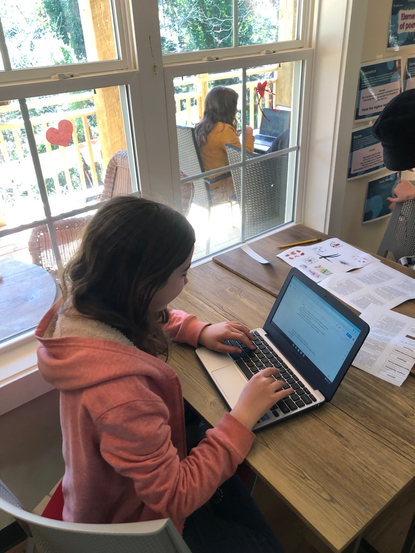Upper El (Mr. D): Atoms are small. Really small.
- Derek Henig
- Mar 27, 2023
- 3 min read
** Catching up with blog posts. Let me take you back in time to two weeks ago...
This week, we continued our exploration of chemistry by diving deep into the world of atoms and learning about two important chemical reaction classifications. All this while finishing our first Flash Fiction story.
On Monday, we approached things a little differently for our chemistry lesson. Students read an article I wrote about how reactions start and end in chemistry. After they did the reading, they had to answer a few questions. This helps us write reflections in complete sentences and generally reflect on science concepts.
The reading covered the concept of Activation Energy--the amount of initial energy needed to begin a reaction. Like a roller coaster climbing to the top, once it gets rolling downhill, it goes until the ride is over. The same is true for chemical reactions. They need an initial boost to get things rolling. This is called Activation Energy.
Then, once the reaction "falls downhill," it goes to completion. When it comes to the end of a reaction, there are two possibilities. Either the reaction is Exothermic or Endothermic. Students learned what these two terms mean and how they apply to real-life examples.
Exothermic is a release of heat, so combustion and hot hands are examples. Also, these reactions tend to be easier to get started. Endothermic is an absorption of heat from the surroundings, which we feel as things becoming cold. Instant cold packs are a great example here.
On Tuesday, we went back to atoms. We heard that they're small, but how small are they? The truth is that they are so small it's difficult to comprehend or even imagine. So, we spent our afternoon doing some math and comparing atoms to grains of sand.
This is how it worked:
Students picked any object in class and measured it in millimeters or centimeters (gotta keep it metric!). Then, we converted the units to meters with a little help from the google conversions tool. Next, students divided that number by the average diameter of an atom: 0.0000000002 meters. Or 0.2 nanometers. We kept things in meters to avoid needing to use scientific notation. This calculation told us how many atoms, if lined up next to each other, would fit across the object measured.
So, if we measured the width of my fingertip, we would learn how many atoms fit across my fingertip. Then, to help with visualizing, we asked, "What if we lined up that many grains of sand instead of atoms? How long would that chain be?" After all, grains of sand are so small, right? When that was done, we needed to convert that answer to miles because the equivalent chain of grains of sand would be over 6 miles for the example of my fingertip!
This was a bit complex, but UE did fantastic with the challenge. We ended with a fun video created by a visual effects artist who made similar comparisons. This helped hammer home the inconceivable size of atoms.
Wednesday, we had a birthday celebration, and on Thursday, we completed our first Flash Fiction story. We spoke a bit about character development and how using a character's thoughts is one of the best approaches to do this. Then, how using the different points of view for writing can help with this or add different elements. First-person makes getting into a character's head immediate. Third-person can help us get in the heads of multiple characters.
Finally, we spoke about answering the tricky question, "What's the point?" Why are we reading this story? What do you want the reader to feel, experience, and think? Answering these questions helps us determine the proper ending for our story and gives us more direction.
We had a great week, and I'm looking forward to our next chemistry lessons!














Comments